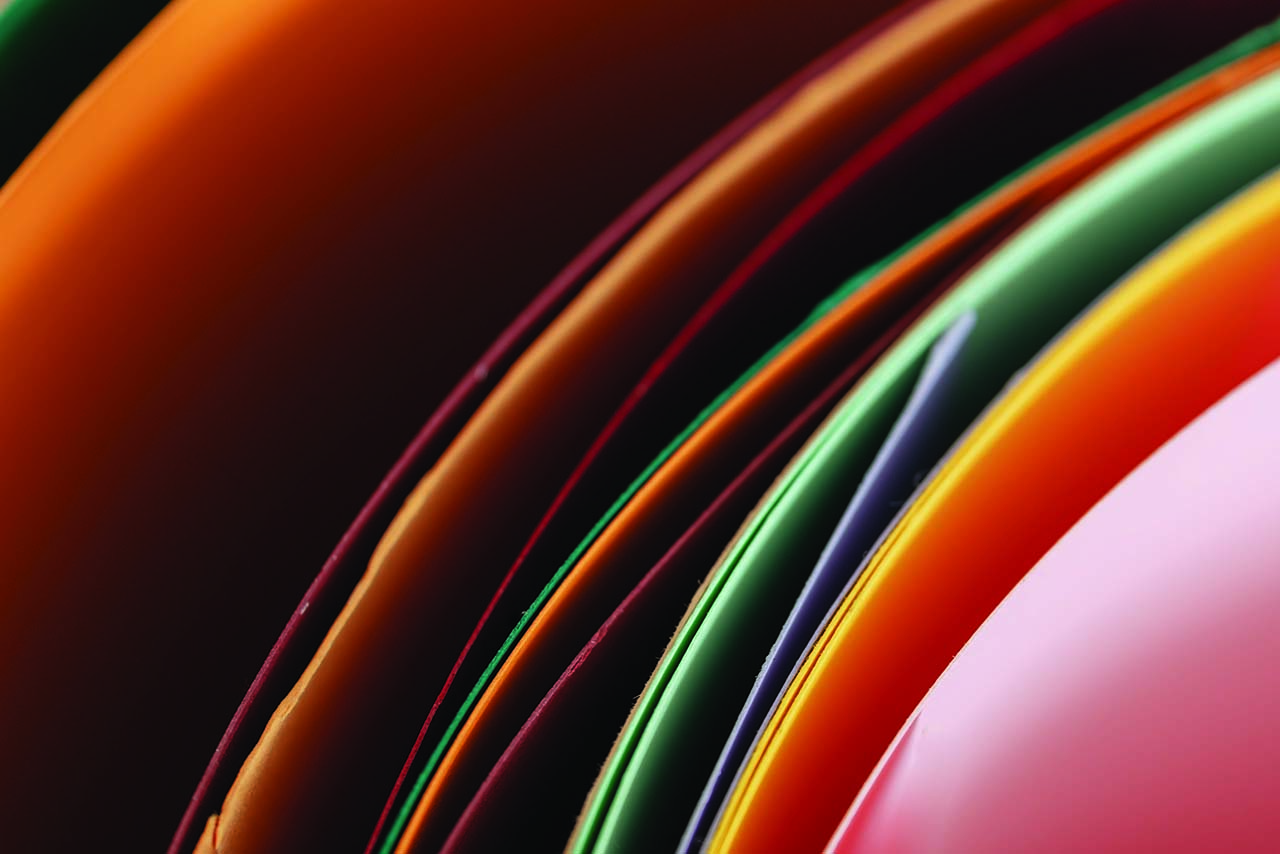
The beauty is in the brain of the beholder
Advances in neuroimaging allows us to have a more indepth understanding of how our brain processes impressions. We now know more of how the brain perceives form, symmetry and colour. We even know what the brain’s favourite shape is.
The human mind is a beautiful and complex thing, sometimes full of surprises. Even though we are modern and civilised people, with office works and take away coffee, our brains might not have fully adapted to this reality. Our inherited preferences and innate reactions shows us that this era of humanity is a relatively small time-span in our biological history. To a large extent, aesthetics is a result of nurture, not nature. There are memories, learned behaviours and cultural issues that help us form visual preferences. A group of scientists, at the Zanvyl Krieger Mind/Brain Institute at the Johns Hopkins University has studied how pure shape is perceived, to see how the brain reacts.
Beauty and the Brain
At an art exhibit in Washington in 2010, called the Beauty & the Brain Revealed, the concept of beauty was explored thanks to science. The exhibit was a collaboration Johns Hopkins University and the Walters Art Museum. Gallery visitors would wear 3-D glasses to explore digitally morphed blob versions of sculpture-sets, to see how 3-D shape characteristics relate to aesthetic preferences.
For each image set, the audience noted their “most preferred” and “least preferred” shape on a ballot. The neuroscientists then reviewed the museum-goers’ responses in combination with MRI (Magnetic Resonance Imaging) scans taken on lab study participants, looking at the very same images.
The researchers had three hypotheses. First, that the shapes we most prefer are more visually stimulating, meaning that they spark intense brain activity. At the same time, it could be that our favourite shapes are peaceful and calm brain activity. Or, they thought, we might settle for shapes that spur a pattern of alternating strong and weak activity. They found it to be almost universally true in data, and also in audiences, that the vast majority have a specific set of preferences.
Biological blobs
“Shallow convex surface curvature is characteristic of living organisms, because it is naturally produced by the fluid pressure of healthy tissue (e.g. muscle) against outer membranes (e.g. skin).”
Researchers believe that the brain may have evolved to process information about smoothly rounded shapes in order to guide survival behaviours like eating, mating and predator evasion. In contrast, the brain devotes less processing to high curvature, jagged forms, which tend to be inorganic (e.g. rocks), hence less important.
Yet another study, this one carried out at the University of Toronto at Scarborough studied the influence of architecture on the human brain. On average, the urban human spend about 90% of her time indoors. A common perception is that the physical features of the places we live and work in influence how we feel and act. The number of home interior magazines and blogs would not survive otherwise.
However, there is surprisingly little research on how said architectural forms impacts behaviour, much less on how it influences brain function. This research group also conducted a MRI study to examine how variation in contour impacts aesthetic judgments.
“Roundness is an universal pleasure”
The Toronto study found that participants were more likely to perceive spaces and objects as beautiful if they were curvilinear than rectilinear. Furthermore, the combination of the behavioural and neural evidence underscores the role of emotion in human preference for curvilinear objects, within architecture and design. In other words – roundness is an universal pleasure for humans.
Given the knowledge of how we are influenced of curvilinear forms, take a look at your surroundings and let the curves in. Most likely, your brain will thank you.
TEXT MARIA VÅRENIUS
PHOTO PEXELS
Related News

Melanopic lux: lighting for education influenced by human biology
Light is essential in our daily lives, influencing our ability to see, overall well-being and performance. In educational environments, lighting quality can significantly impact students' focus, mood, and energy levels. So, how do we know what is the right amount and quality of light for this setting? Traditionally, light has been measured in lux, a unit of measurement for the intensity of light. It's used to measure how much light falls on a surface or the amount of light in a given space. One lux is the amount of light that falls on a surface that is one square meter in area when one lumen of light is spread out evenly. Recent advancements in research have unveiled the importance of melanopic lux, which goes beyond mere visibility. This measures how effectively light stimulates specific eye cells that regulate crucial non-visual functions such as sleep and alertness. In classrooms and lecture theatres, the melanopic ratio has become vital in lighting design, enabling educators to create spaces that support visual tasks and align with students' biological rhythms. In this article, we explore how lighting solutions can align with our biology, and how this helps to create optimum conditions for educational environments. The science of vision and light The human eye is a remarkable organ designed for high-resolution colour vision within a small area (approximately 2 degrees of the visual field) while relying on peripheral vision for motion detection. This dual-function system, shaped by evolution for survival, continues to influence how we perceive and interact with our surroundings. Our eyes are particularly susceptible to green and yellow light, reflecting our evolutionary adaptation to naturally lit environments. In contrast, blue light, which is chief in modern LED lighting, requires higher intensity to be perceived at the same level. Effective lighting design carefully considers brightness, timing, and distribution to support visual clarity and biological functions like mood and alertness. For example, exposure to bright light in the morning helps regulate circadian rhythms, boosting alertness and mitigating the effects of seasonal darkness. This is particularly important in educational environments, such as schools and universities, where lighting impacts mood, focus, and overall performance. Our Organic Response system provides an innovative solution tailored for these spaces. This smart lighting technology automatically optimises light levels, featuring daylight-responsive sensors and advanced occupancy detection, maintaining a balance between natural and artificial light. Doing so supports visual comfort and reduces energy consumption, making it an ideal choice for creating dynamic, efficient, and student-friendly learning environments. To further support students, well-lit spaces with minimal glare are essential for reducing eye strain and maintaining focus during extended study sessions. Adjusting light intensity and colour temperature for different tasks—such as reading, group discussions, or creative activities—enhances light's visual and non-visual effects. By integrating thoughtful lighting strategies like those offered by Organic Response, educational environments can promote healthier, more productive, and engaging learning experiences. Integrative lighting: Supporting health and well-being. Integrative lighting (also referred to as human-centred lighting) combines visual and non-visual benefits (such as emotional effects) to support biological rhythms and psychological well-being. This approach goes beyond traditional lighting solutions by considering how light impacts circadian rhythms and hormonal balance. Light exposure in the morning is critical for suppressing melatonin (the sleep hormone) and increasing cortisol (the alertness hormone). Proper timing helps align students' natural rhythms with school schedules, which often require a lot of focus. Consistent exposure to bright, cool light early in the day can enhance energy levels and cognitive performance. The melanopic ratio compares the spectral composition of a light source with daylight. Using this information, you can determine its melanopic lighting intensity. This enables the design of lighting setups that precisely meet both visual and biological lighting needs. Lighting recommendations for educational spaces Each learning environment has unique lighting needs. Libraries benefit from direct lighting on the floor, paired with ambient lighting on walls and ceilings. Vertical shelf lighting (200-300 lx) makes it easier to browse titles. Lecture halls, on the other hand, require glare-free, comfortable lighting with flexible control, ideally with pre-programmed scenarios. In auditoriums and classrooms, strong vertical lighting is crucial for clear visual communication, especially over greater distances, enhancing facial expressions and engagement. General lighting recommendations apply to all educational spaces. Our solutions meet industry standards, ensuring reading and writing areas maintain 500 lx for effective visual tasks. Using daylight-responsive sensors for luminaire rows can reduce energy consumption while maximising natural light. The number and arrangement of luminaires should be adjusted based on the room's size and function to ensure consistent illumination. The role of dynamic lighting A Double Dynamic lighting system can be a game-changer in educational environments. It allows for intensity and colour temperature adjustments to match the specific needs of activities, from quiet reading sessions to collaborative group work. Fagerhult's distinct approach to lighting means that our design is human-centric; we integrate scientific insight into light and human psychology, creating environments that support academic performance and well-being. Our focus on energy efficiency also means our advanced control systems optimise light usage while minimising energy consumption, contributing to a building’s sustainability goals. The customisable setting and flexible solutions ensure that educational environments can create tailored lighting profiles for different times of the day or specific learning activities. Long-term benefits of melanopic lighting Melanopic lighting, designed to mimic the natural light spectrum, helps regulate the circadian rhythm, which is essential for maintaining focus, energy, and emotional balance. In classrooms and study areas, proper lighting can reduce eye strain, improve sleep patterns, and enhance mood, which are critical for students' mental health and academic performance. By incorporating lighting that aligns with our biological needs, schools and universities can foster healthier, more productive learning environments,. This is particularly important during the winter months when daylight is limited. Whether through advanced tuneable white light systems, designs that maximise daylight, or energy-efficient solutions, we are dedicated to leading the way in lighting innovation for educational environments, delivering brighter futures—one classroom at a time.
The inspiration behind Nobel Week Lights: ”Light, art and technology intertwined.”
Nobel Week Lights has quickly become a beloved public celebration. During Nobel Week, Stockholm residents flock outdoors to marvel at the spectacular light installations, where contemporary lighting technology meets artistic expression. ”We aim to create a moment of gathering: around light and around something meaningful”, says Lara Szabo Greisman. Nobel Week Lights is a light festival that illuminates Stockholm during the darkest time of the year – a free cultural experience for everyone. Presented by the Nobel Prize Museum, the festival invites international and local artists, designers and students to create light artworks inspired by the Nobel Prize. The installations shed new light on the scientific discoveries, literature and peace efforts of Nobel laureates while offering a fresh perspective on the city. Fagerhult is Principal Partner of Nobel Week Lights 2024, and this year’s edition features 16 different light installations across Stockholm. The artworks can be experienced from 7–15 December, including ”The Wave”, a light installation by the art collective Vertigo, located in front of the Parliament House where visitors can walk right through the luminous wave. The Wave by Vertigo ”Light and art and creativity is incredibly intertwined because these are technologies that are constantly evolving. So part of the fun working with the artists is that they are constantly testing new technologies. And we see these incredible visual results which are based on just pure innovation”, says Lara Szabo Greisman, co-founder and producer of Nobel Week Lights. Lara Lara Szabo Greisman and Leading Lights by Les Ateliers BK The significance of light as a collective force, its ability to encapsulate life and death, joy and sorrow – indeed, the very essence of what it means to be human – makes lighting a powerful medium of artistic expression, she argues: ”The dream for the festival is that this becomes a personal experience for each and every member of the audience. A moment that they remember and cherish . A moment that they think about later and bring forward as their story of connecting with the city.”

